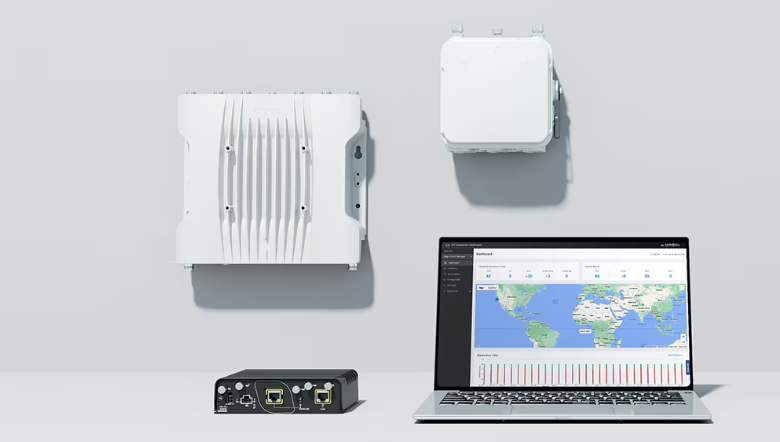Industrial Wireless Solutions vs Wired Networks: What’s Best for Modern Factories?

As modern factories evolve, the debate between adopting Industrial Wireless Solutions or sticking with traditional wired networks intensifies. Wireless systems offer new levels of flexibility and scalability, making them attractive for smart factories. On the other hand, wired networks bring proven stability and low-latency performance. Choosing the right setup means understanding your application’s demands and each technology’s limitations.
Speed and Latency: Wired Takes the Lead, but Wireless Is Catching Up
Wired networks outperform wireless setups, especially fibre and Ethernet, in terms of raw speed and latency. Real-time industrial applications often require response times under a few milliseconds, and wired connections consistently deliver on this demand. This makes them ideal for robotics, PLCs, and high-speed motion controls.
That said, Industrial Wireless Solutions have improved dramatically. Wireless systems are narrowing the performance gap with protocols like Wi-Fi 6, 5G, and proprietary low-latency mesh networks. For most monitoring and supervisory tasks, wireless latency is more than acceptable. The key is matching the right technology to the job, rather than assuming one approach always wins.
Scalability and Flexibility: Wireless Dominates
Wireless networks shine when scalability and adaptability are top priorities. As factories move toward modular and reconfigurable layouts, the ability to add or relocate sensors, machines, and devices without rewiring is a game-changer. This flexibility translates into reduced downtime and faster innovation cycles.
Industrial Wireless Solutions offer centralised management and self-healing capabilities, making large-scale deployment much easier. They support diverse topologies, including star, mesh, and hybrid networks. This adaptability allows facilities to evolve. While wired networks can scale, too, they often come with higher labour and infrastructure costs. Thus, wireless is the preferred path for rapidly growing or frequently changing environments.
Reliability and Uptime: Wired Networks Still Reign
Wired connections generally provide a more stable link when it comes to reliability. They’re less affected by environmental factors such as electromagnetic interference, physical obstructions, or network congestion, which makes them particularly valuable in harsh industrial settings with high noise or metal interference.
However, Industrial Wireless Solutions is closing this reliability gap. Modern systems incorporate redundancy, frequency hopping, and spectrum analysis tools. With proper network planning and placement, wireless can achieve uptime levels rivaling its wired counterparts. Yet, for mission-critical operations with no room for failure, the consistency of wired connections still holds an edge.
Security: Both Options Require Strong Safeguards
Security is a significant concern in both wired and wireless environments. Wired networks benefit from physical isolation and controlled access points. However, they’re not immune to breaches, especially when connected to broader IT systems or remote access portals.
While more exposed due to their nature, Industrial Wireless Solutions can be secured with advanced encryption, authentication protocols, and intrusion detection systems. The challenge lies in managing these systems properly. Security strategies must be robust and regularly updated. Ultimately, the strength of your security posture depends more on how technologies are implemented than whether they’re wired or wireless.
Cost Considerations: It’s Not Just the Hardware
Cost is a multifaceted issue when comparing Industrial Wireless Solutions to wired setups. While wireless modules may be more expensive individually, the overall system can cost less due to reduced cabling, installation time, and labour. These savings scale with the size and complexity of the deployment.
Wired networks often require extensive planning, trenching, and downtime during installation. However, they may lead to lower maintenance costs over time. Factors like ease of upgrades, flexibility, and future expansion must be included when calculating the total cost of ownership. A hybrid approach—combining wired backbones with wireless endpoints—strikes the best financial balance in many scenarios.
Maintenance and Troubleshooting: Pros and Cons on Both Sides
Wired networks are generally easier to diagnose because physical connections are more straightforward. Faults can often be isolated with tools like cable testers or link lights, simplifying maintenance in many traditional setups.
In contrast, Industrial Wireless Solutions may require more advanced diagnostic tools like spectrum analysers or software-defined monitoring systems. While this adds complexity, the trade-off is quicker reconfiguration and remote troubleshooting. Wireless devices can often be diagnosed and updated over the air, minimising service disruptions.
Is an Industrial Wireless Solution Right for You
What’s best for modern factories— industrial Wireless Solution or traditional wired networks? The answer depends on your application, budget, and plans. Wired networks remain unbeatable in reliability, latency, and certain security aspects. Yet, wireless systems offer unmatched flexibility, scalability, and ease of deployment.
In reality, most modern factories benefit from a hybrid model. Combining the strengths of both approaches ensures optimised performance, cost-efficiency, and adaptability. As technology continues to evolve, Industrial Wireless Solutions will become even more capable, making them an essential part of the connected factory of the future.





